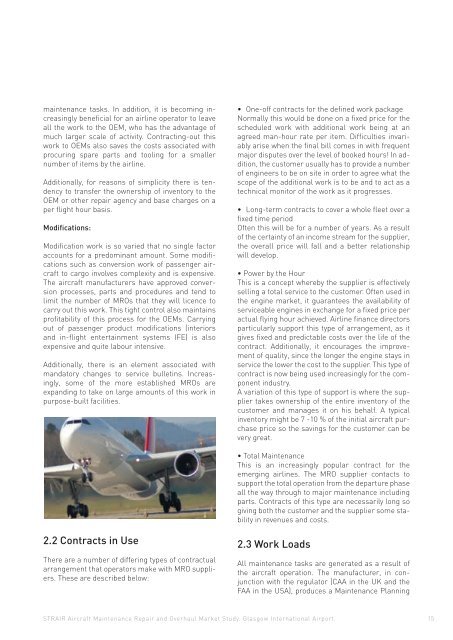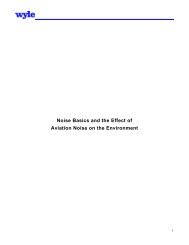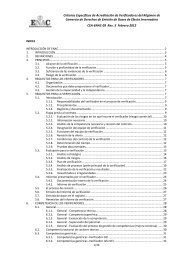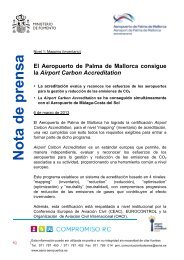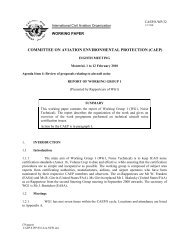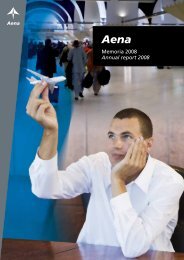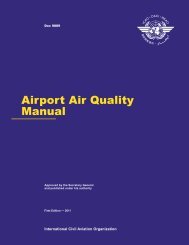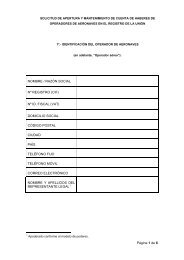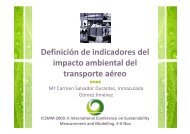Aircraft Maintenance Repair and Overhaul Market Study. - OBSA
Aircraft Maintenance Repair and Overhaul Market Study. - OBSA
Aircraft Maintenance Repair and Overhaul Market Study. - OBSA
- No tags were found...
You also want an ePaper? Increase the reach of your titles
YUMPU automatically turns print PDFs into web optimized ePapers that Google loves.
maintenance tasks. In addition, it is becoming increasinglybeneficial for an airline operator to leaveall the work to the OEM, who has the advantage ofmuch larger scale of activity. Contracting-out thiswork to OEMs also saves the costs associated withprocuring spare parts <strong>and</strong> tooling for a smallernumber of items by the airline.Additionally, for reasons of simplicity there is tendencyto transfer the ownership of inventory to theOEM or other repair agency <strong>and</strong> base charges on aper flight hour basis.Modifications:Modification work is so varied that no single factoraccounts for a predominant amount. Some modificationssuch as conversion work of passenger aircraftto cargo involves complexity <strong>and</strong> is expensive.The aircraft manufacturers have approved conversionprocesses, parts <strong>and</strong> procedures <strong>and</strong> tend tolimit the number of MROs that they will licence tocarry out this work. This tight control also maintainsprofitability of this process for the OEMs. Carryingout of passenger product modifications (interiors<strong>and</strong> in-flight entertainment systems IFE) is alsoexpensive <strong>and</strong> quite labour intensive.Additionally, there is an element associated withm<strong>and</strong>atory changes to service bulletins. Increasingly,some of the more established MROs areexp<strong>and</strong>ing to take on large amounts of this work inpurpose-built facilities.• One-off contracts for the defined work packageNormally this would be done on a fixed price for thescheduled work with additional work being at anagreed man-hour rate per item. Difficulties invariablyarise when the final bill comes in with frequentmajor disputes over the level of booked hours! In addition,the customer usually has to provide a numberof engineers to be on site in order to agree what thescope of the additional work is to be <strong>and</strong> to act as atechnical monitor of the work as it progresses.• Long-term contracts to cover a whole fleet over afixed time periodOften this will be for a number of years. As a resultof the certainty of an income stream for the supplier,the overall price will fall <strong>and</strong> a better relationshipwill develop.• Power by the HourThis is a concept whereby the supplier is effectivelyselling a total service to the customer. Often used inthe engine market, it guarantees the availability ofserviceable engines in exchange for a fixed price peractual flying hour achieved. Airline finance directorsparticularly support this type of arrangement, as itgives fixed <strong>and</strong> predictable costs over the life of thecontract. Additionally, it encourages the improvementof quality, since the longer the engine stays inservice the lower the cost to the supplier. This type ofcontract is now being used increasingly for the componentindustry.A variation of this type of support is where the suppliertakes ownership of the entire inventory of thecustomer <strong>and</strong> manages it on his behalf. A typicalinventory might be 7 -10 % of the initial aircraft purchaseprice so the savings for the customer can bevery great.• Total <strong>Maintenance</strong>This is an increasingly popular contract for theemerging airlines. The MRO supplier contacts tosupport the total operation from the departure phaseall the way through to major maintenance includingparts. Contracts of this type are necessarily long sogiving both the customer <strong>and</strong> the supplier some stabilityin revenues <strong>and</strong> costs.2.2 Contracts in UseThere are a number of differing types of contractualarrangement that operators make with MRO suppliers.These are described below:2.3 Work LoadsAll maintenance tasks are generated as a result ofthe aircraft operation. The manufacturer, in conjunctionwith the regulator (CAA in the UK <strong>and</strong> theFAA in the USA), produces a <strong>Maintenance</strong> PlanningSTRAIR <strong>Aircraft</strong> <strong>Maintenance</strong> <strong>Repair</strong> <strong>and</strong> <strong>Overhaul</strong> <strong>Market</strong> <strong>Study</strong>. Glasgow International Airport. 15


